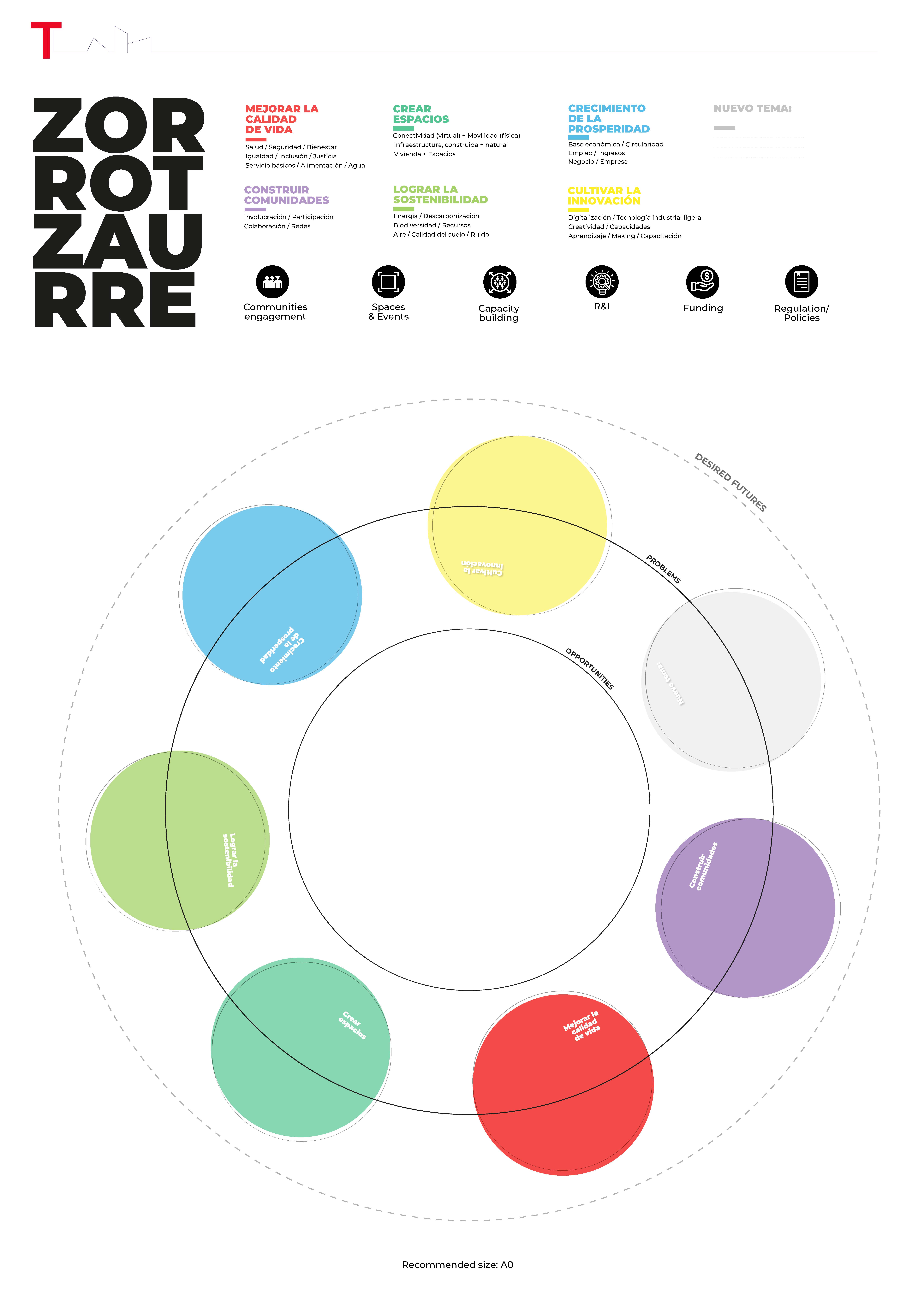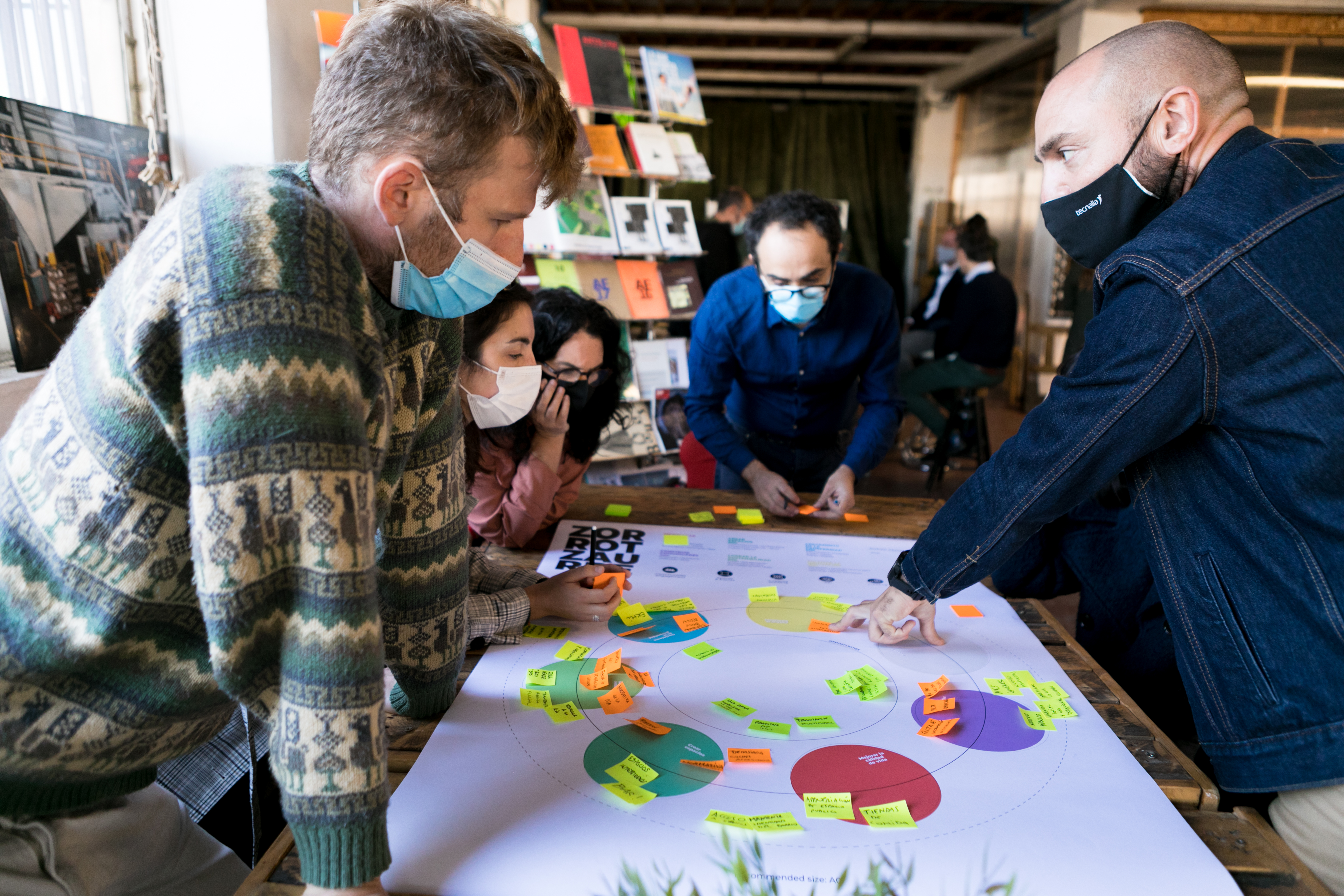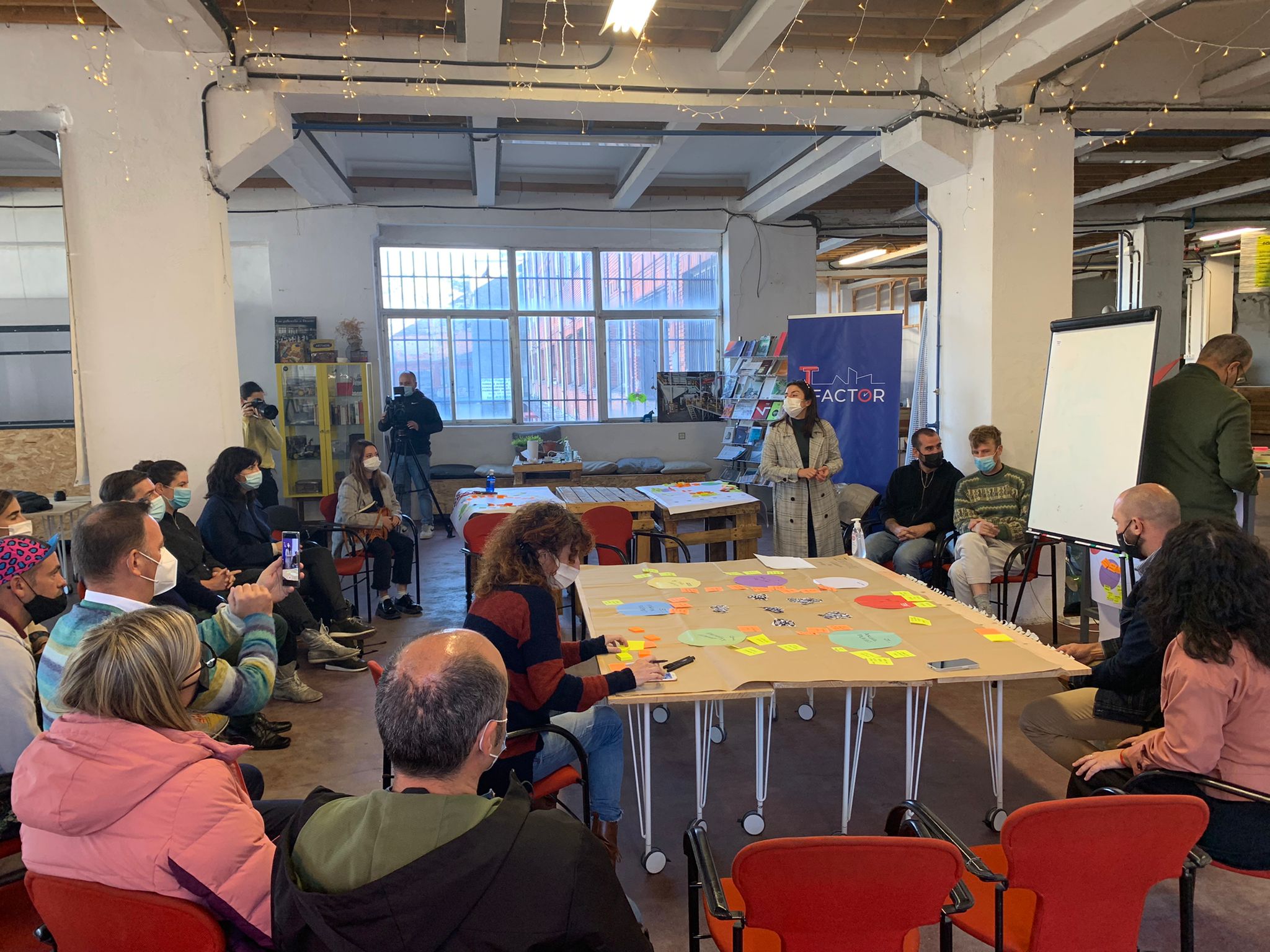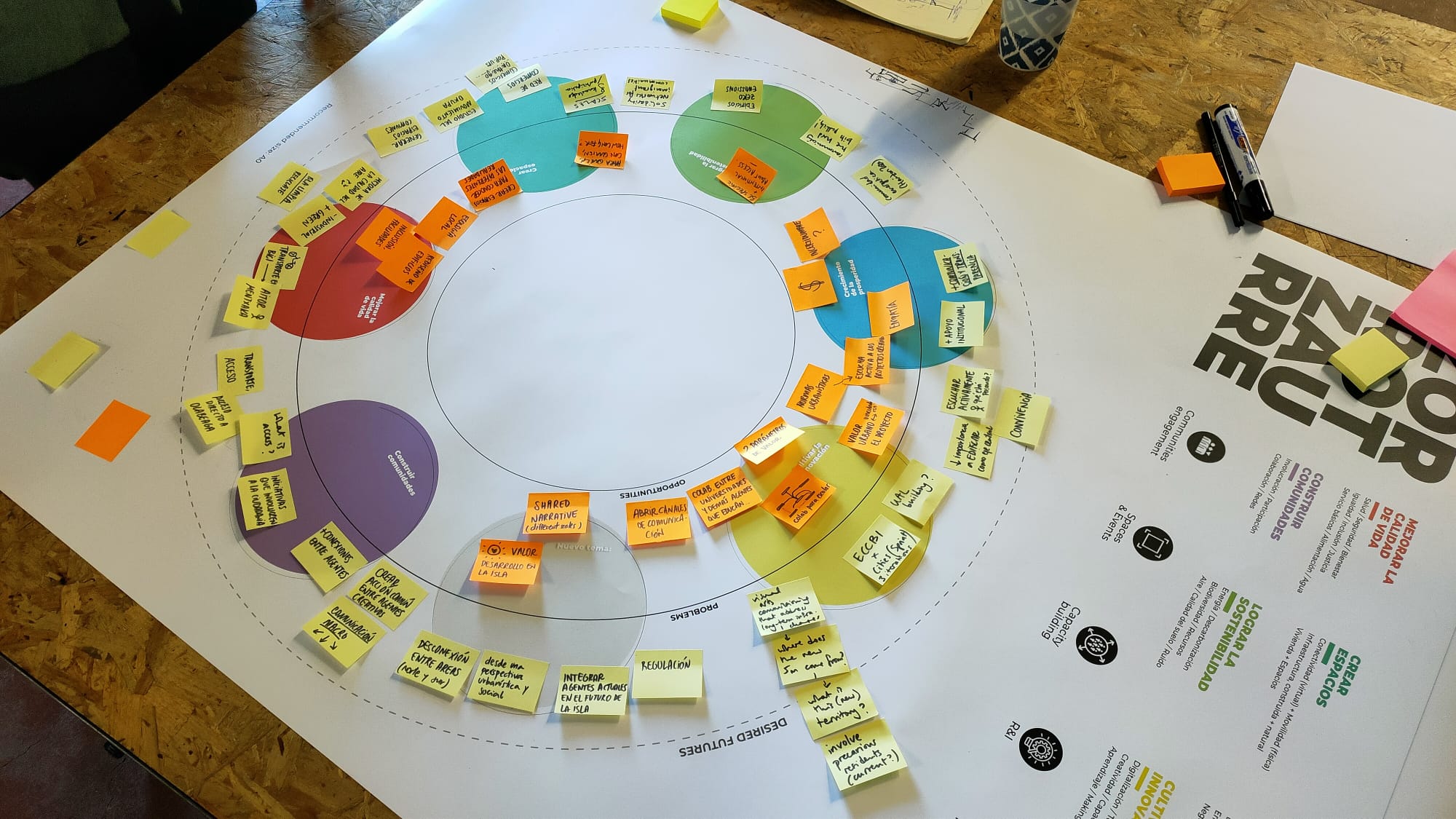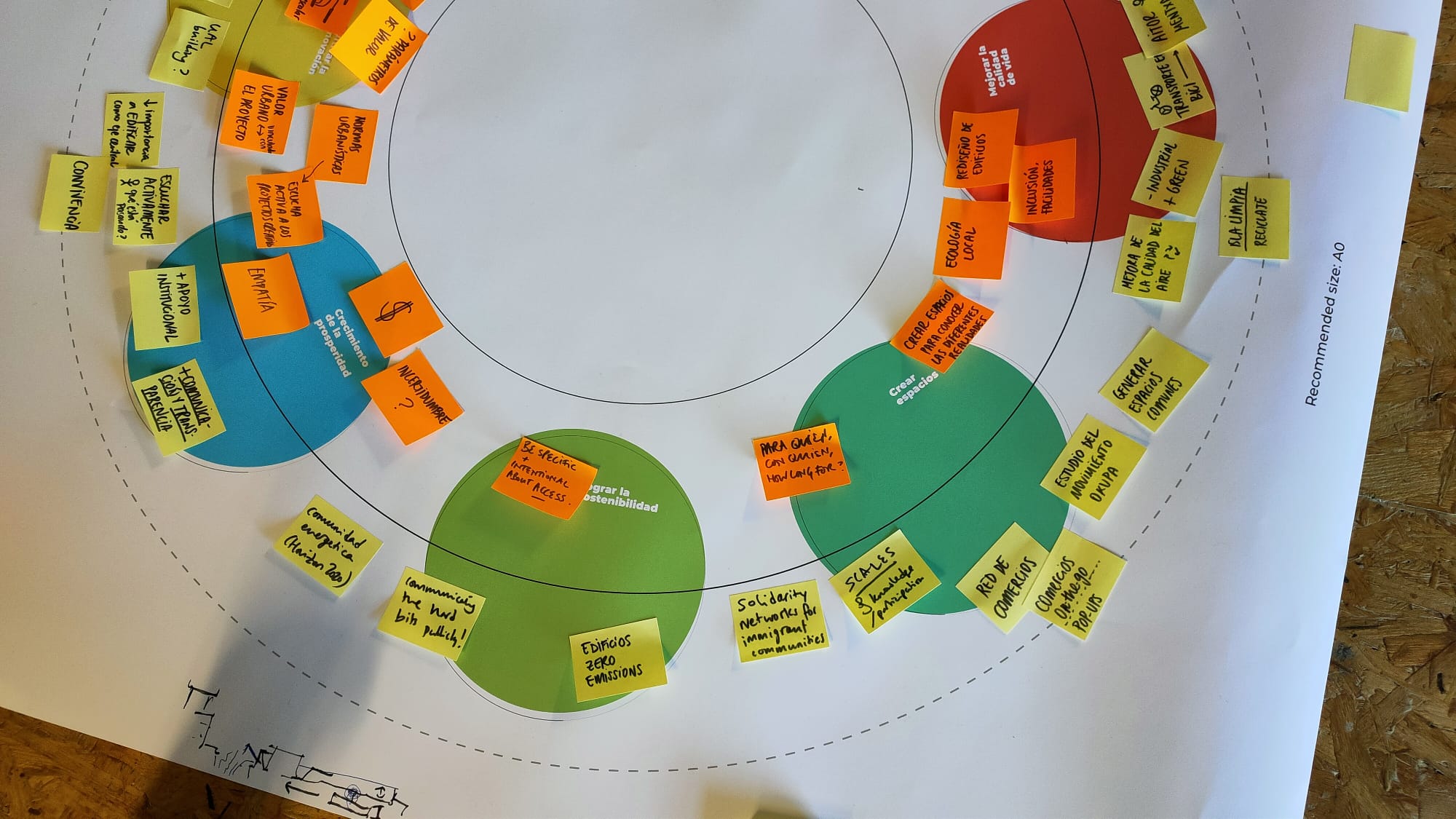In a complex urban regeneration where typically so many different and often conflicting priorities are at stake, how can we start aligning public, private and people agendas? How can we foster participatory and open conversations about the future of our cities?
On October 29, we hosted a one day workshop at Espacio Open involving representatives from local grassroots, universities and the Municipality. With the workshop, we aimed at deep diving into the creative and cultural ecosystem of Zorrotzaurre to identify opportunities for Universities-grassroots collaboration that T-Factor can support in the coming years, leveraging the ‘meanwhile’ of the island’s redevelopment.
To run the workshop, we designed a tool and a methodology (figure on the right) inspired by the Systems Practice workbook developed by the Omidyar Group. As a first step, we brainstormed on our guiding star, understood as a vision that is framed as the desired future system toward which we are working. To facilitate the discussion, we worked in small groups, using the 6 impact themes of the T-Factor’s Theory of Change as a reference - i.e., Building Communities, Growing Prosperity, Cultivating Innovation, Attaining Sustainability, Making Places, Improving Health and Wellbeing.
In a second step, we moved to the ‘barriers & issues’ area of the tool. Based on the guiding stars identified in each group, we used the following questions as briefs for discussion:p
"Why is collaboration not happening or happening in a fragmented way?’’
"What is blocking collaboration towards the desired futures? What are the key barriers?’’
"What are the "root problems" and what the consequences?"
We then reconvened in plenary and ask participants to report on their discussion, taking notes on a big printed version of the tool. We spent time looking at the map together, in order to notice whether there were certain themes that emerged more than others, or something missing in terms of desired futures or issues/barriers.
We worked in plenary using the big canvas to map visions and barriers where participants felt they were most active. To do se, we equipped the participants with sticky icons related to different types of assets they own (ex. Funding / capacity building / policies / spaces, etc). This was meant to visualise where there could be synergies, but also where there could be possible gaps in interventions and resources.
Lastly, we asked the participants to look at the big map and identify opportunities ‘’in the meanwhile’’, with the following question as a prompt: "’Which opportunities can we address in T-Factor that are likely to be triggering points for achieving the desired futures?"
Based on this final discussion, we came up with fewer areas of intervention that T-Factor could explore and frame as missions:
- Pilot (thematic) projects jointly developed by Universities and grassroots organisations
- Collaborative governance for Zorrotzaurre’s cultural and creative ecosystem
- Enabling regulation for temporary uses.
Want to explore the tool?
Authors: Laura Martelloni & Dario Marmo (LAMA)
- Universities-Grassroots collaboration

Guiding Star Workshop
Identify what is your desired future of urban development and the existing assets that can be leveraged through meanwhile intervention.
